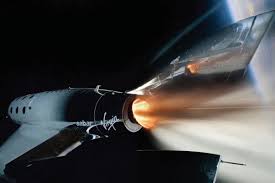
Breaking News
 They've Been Feeding You Poison (And Calling It Food)
They've Been Feeding You Poison (And Calling It Food)
 Tattoo ink may cause prolonged changes to the immune system
Tattoo ink may cause prolonged changes to the immune system
 Travel gadget promises to dry and iron your clothes – totally hands-free
Travel gadget promises to dry and iron your clothes – totally hands-free
 Duckweed: A sustainable, protein-packed food source smeared by Big Ag
Duckweed: A sustainable, protein-packed food source smeared by Big Ag
Top Tech News
 Perfect Aircrete, Kitchen Ingredients.
Perfect Aircrete, Kitchen Ingredients.
 Futuristic pixel-raising display lets you feel what's onscreen
Futuristic pixel-raising display lets you feel what's onscreen
 Cutting-Edge Facility Generates Pure Water and Hydrogen Fuel from Seawater for Mere Pennies
Cutting-Edge Facility Generates Pure Water and Hydrogen Fuel from Seawater for Mere Pennies
 This tiny dev board is packed with features for ambitious makers
This tiny dev board is packed with features for ambitious makers
 Scientists Discover Gel to Regrow Tooth Enamel
Scientists Discover Gel to Regrow Tooth Enamel
 Vitamin C and Dandelion Root Killing Cancer Cells -- as Former CDC Director Calls for COVID-19...
Vitamin C and Dandelion Root Killing Cancer Cells -- as Former CDC Director Calls for COVID-19...
 Galactic Brain: US firm plans space-based data centers, power grid to challenge China
Galactic Brain: US firm plans space-based data centers, power grid to challenge China
 A microbial cleanup for glyphosate just earned a patent. Here's why that matters
A microbial cleanup for glyphosate just earned a patent. Here's why that matters
 Japan Breaks Internet Speed Record with 5 Million Times Faster Data Transfer
Japan Breaks Internet Speed Record with 5 Million Times Faster Data Transfer
Virgin Galactic spaceplane reaches space with first passenger on board

Tourism venture Virgin Galactic sent its spaceplane into space for the second time this morning, qualifying all three people on the flight for their commercial astronaut wings. One of those riders was Virgin Galactic's first test passenger, Beth Moses, the chief astronaut instructor at Virgin Galactic, who flew along with the vehicle's two pilots. She's also Virgin Galactic's first female flyer.
Virgin Galactic's spaceplane, the VSS Unity, is designed to take passengers to the edge of space where they can experience a few minutes of weightlessness. But up until the end of last year, the vehicle had yet to breach Earth's atmosphere. That changed in December when Virgin Galactic made history by sending VSS Unity to a height of 51.4 miles (82.7 kilometers), an altitude that many (but not all) consider to be the start of space. For those who adhere to that definition, it was the first time that people had launched to space from the US since 2011. As a result, the two pilots of the December flight received astronaut wings from the Federal Aviation Administration in early February.

 Advanced Propulsion Resources Part 1 of 2
Advanced Propulsion Resources Part 1 of 2

